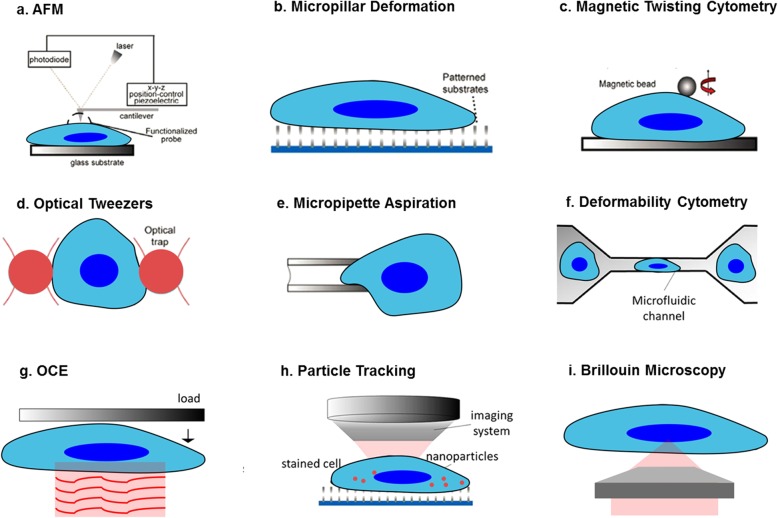Fig. 2.
Schema of the methods to measure the cellular biomechanics properties. Standard methods, such as AFM (a), micropillar deformation (b), magnetic twisting cytometry (c), optical tweezers (d), micropipette aspiration (e), deformability cytometry (f) and OCE (g), require the application of contact forces to the extracellular matrix and measure stiffness from cellular displacement. The contact requirement makes these methods destructive and not capable to retrieve volumetric information. On the other hand, typical noncontact techniques, such as particle tracking (h), are either limited by an intrinsically low spatial resolution or require sample labelling through the use of nanoparticles. A promising method to non-invasively assess the extracellular and intracellular biomechanics in 3D is Brillouin microscopy (i), where light probes thermally activated spontaneous acoustic waves. Adapted by permission from Springer Nature: Bao G and Suresh S. Cell and molecular mechanics of biological materials. Nat Mater. 2003;2(11):715-25, © 2003 [158]

